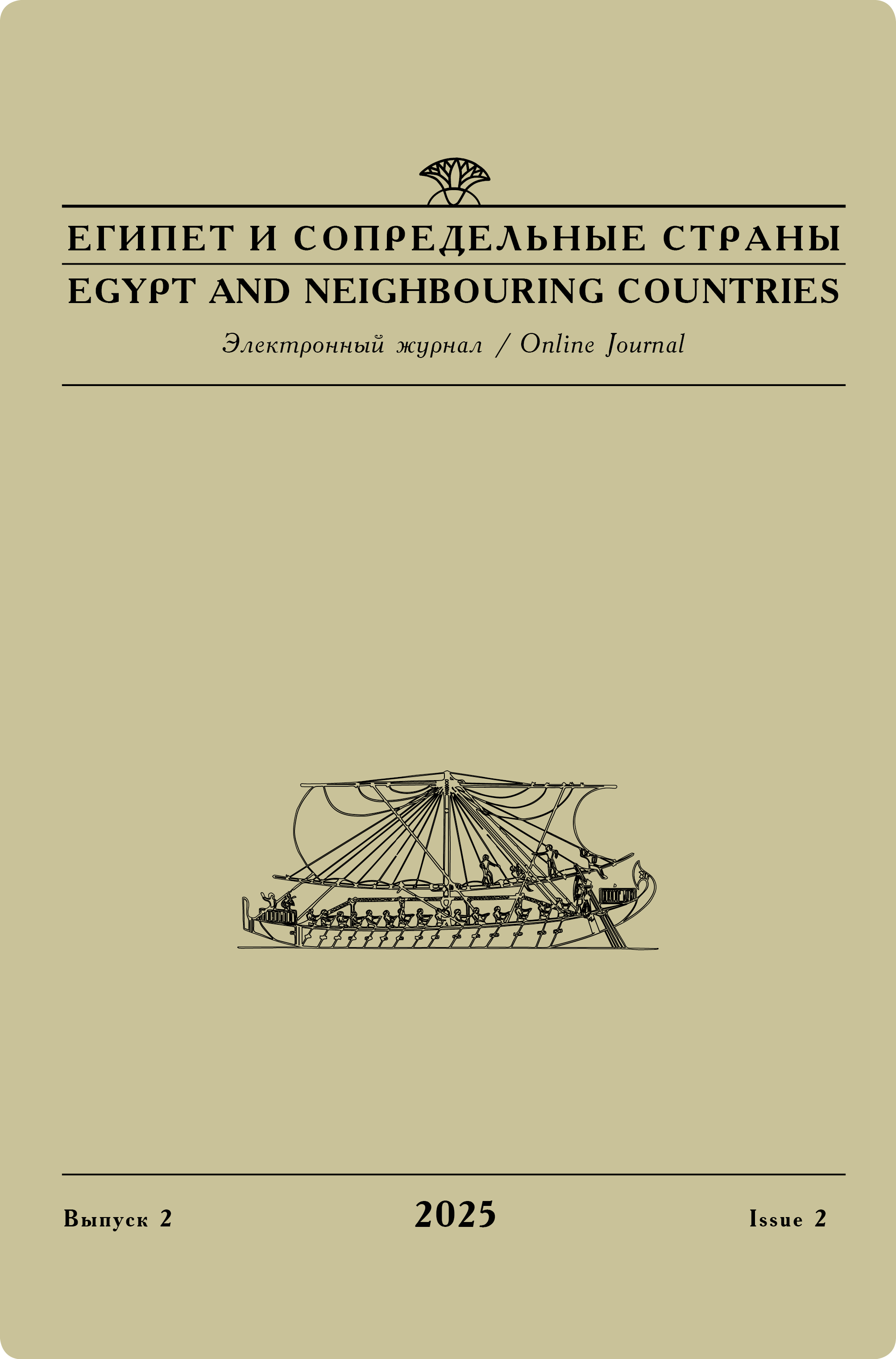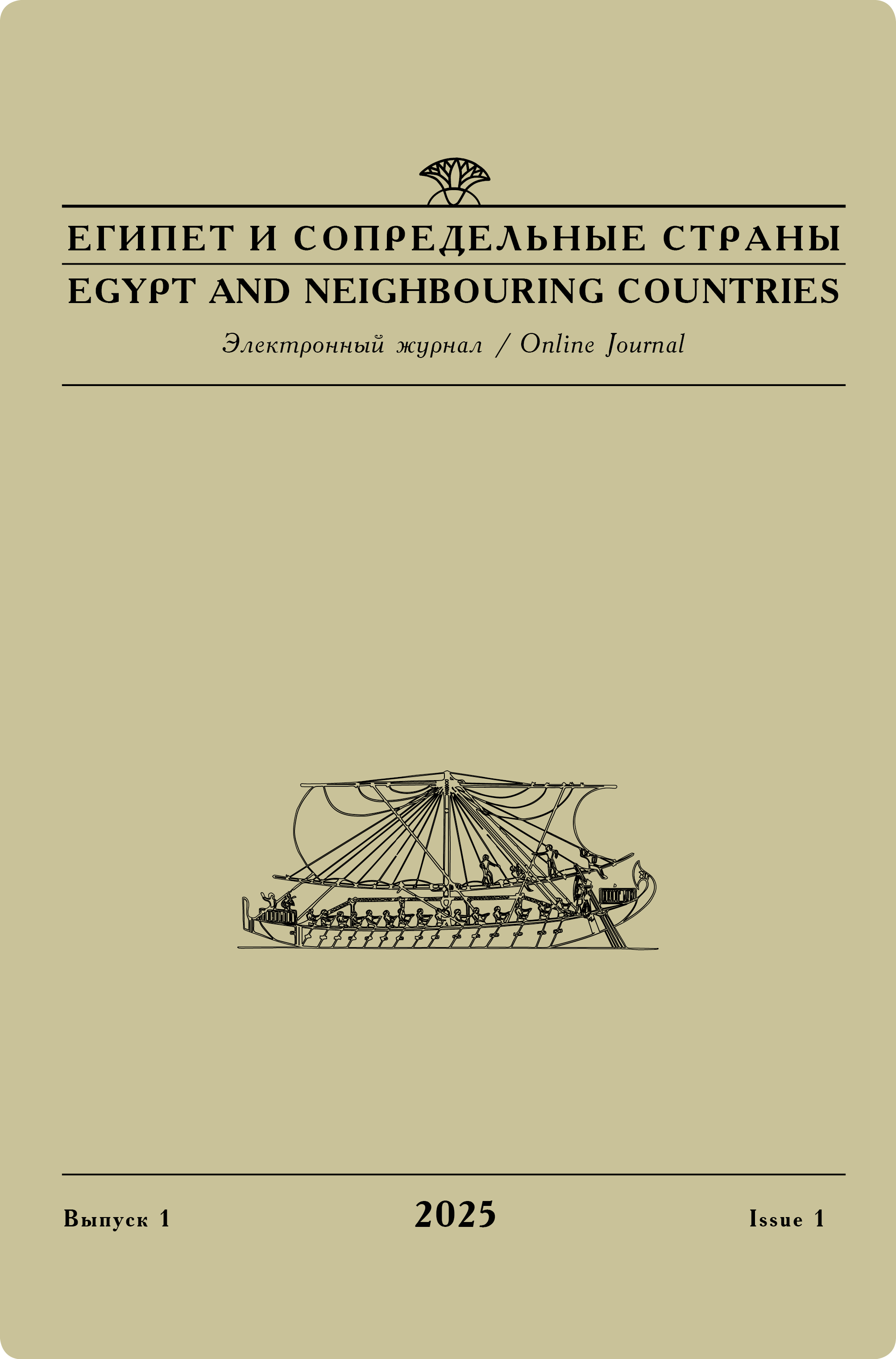Issue 1, 2024
G. А. Belova, N. A. Pavlova
Tekstil'nyi kompleks iz mogily 386: opyt atributsii [Textiles from the grave 386: experience of attribution]
The article represents the attribution experience of the textile complex from the grave 386 of Deir al-Banat necropolis studied by CES RAS in 2022 The article focuses on both textiles made specifically for the burial (shrouds) and the clothes of the deceased. Shrouds and wrapping bands are typical of Deir al-Banat necropolis. Headdress represents a combination of several elements, including a polychrome cap in sprang technique and an upper hood with fringe decorated with horizontal stripes. Stylistic and iconographic analysis of the decoration of tunics made it possible to interpret the images from the point of view of religious beliefs of the population. All the elements of the textile complex from the grave 386 have direct analogies among the "Coptic" textiles from the world museums. The juxtaposing dating of the headdress, the upper tunic, the decorations combing waterfowl and acanthus leaves turned into S/Z ornament, the lower tunic with cross motifs in a circle allowed dating the burial to the time no earlier than the beginning of the 5th and no later than the end of the 6th century.
Keywords:
stylistic analysis, "Coptic" fabrics, ornamental motifs, ancient textiles, Egypt,
early Byzantine period.
Original language — Russian.
DOI: 10.24412/2686-9276-2024-00001.
Referring: Belova G. А., Pavlova N. А. Textiles from the grave 386: experience of attribution [in Russian] // Egypt and neighboring countries 1 (2024): 3–43. DOI: 10.24412/2686-9276-2024-00001.
Read full article




